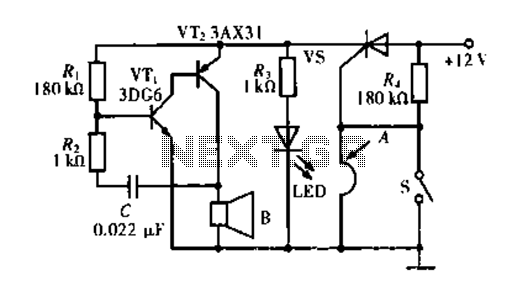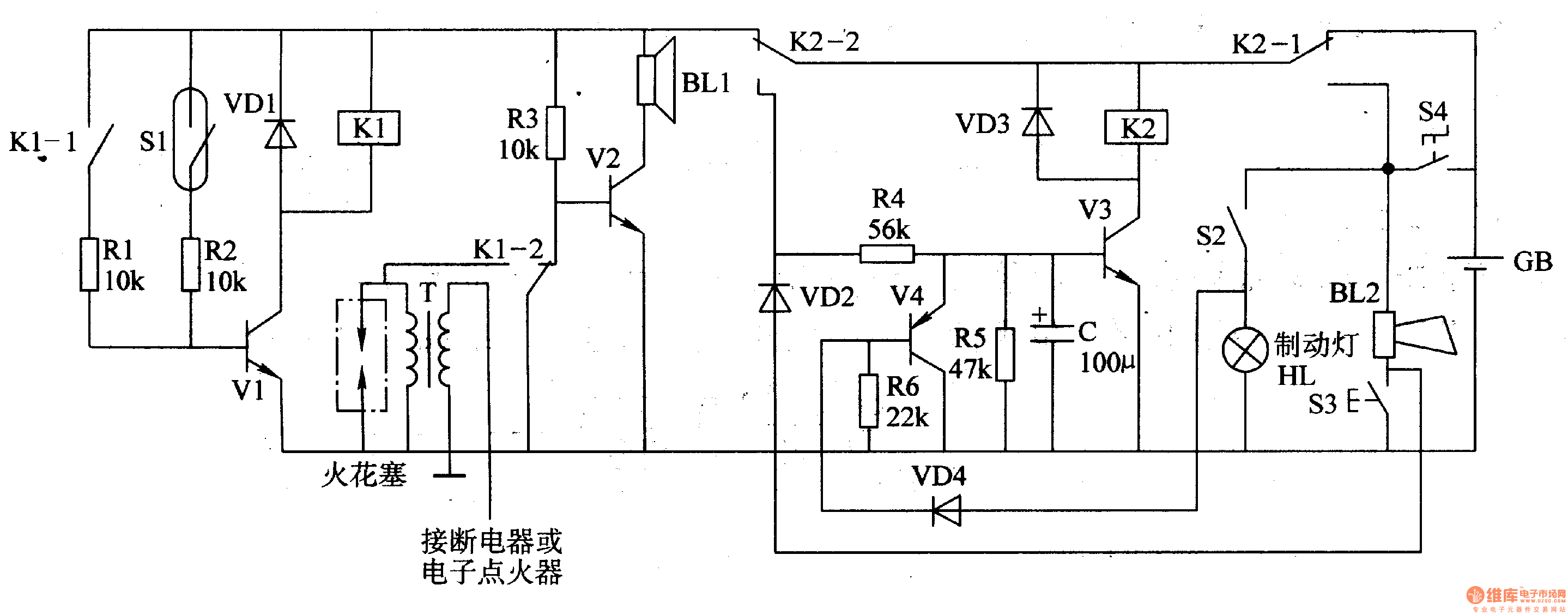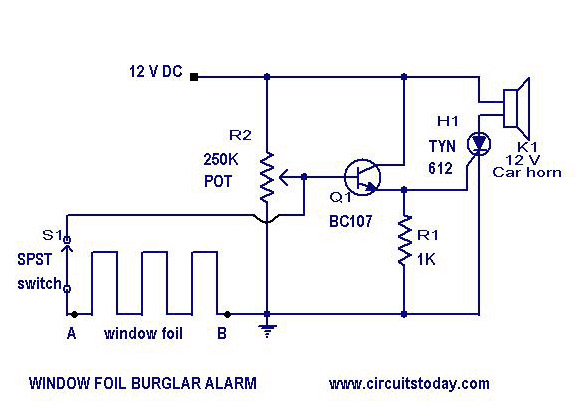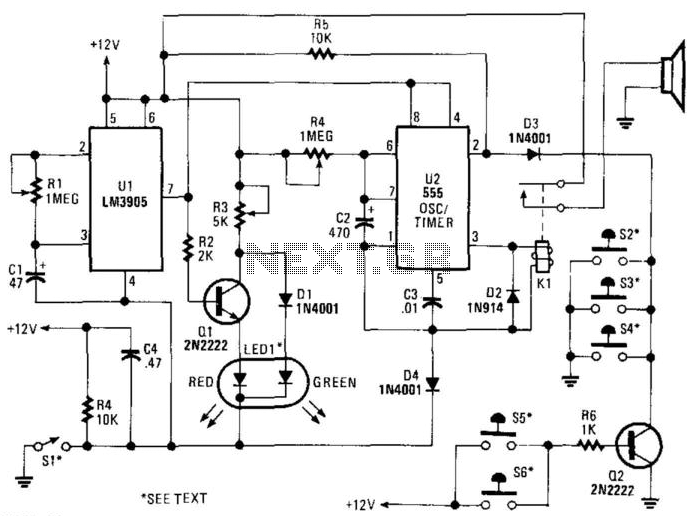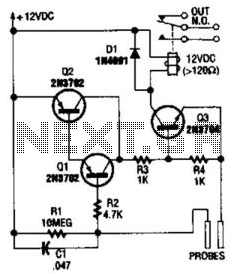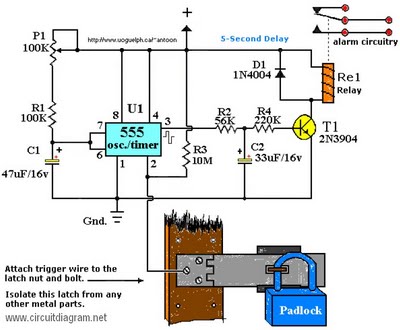
Burglar Alarm With Timed Shutoff
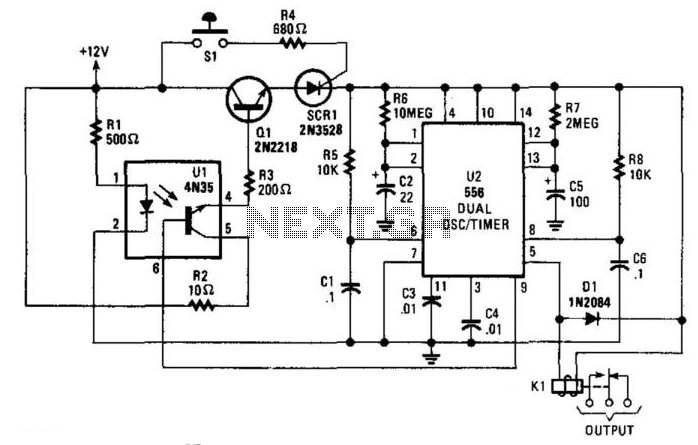
When the SI (sensor) is closed, power is applied to U2, a dual timer. After a time determined by C2, CI is energized after a predetermined time determined by the value of C5. Pin 9 of U2 becomes low, switching off the transistor in the optoisolator, cutting the anode current of SCR1 and de-energizing K1. The system is now reset. It is important to note that (i6x C2) is less than (R7xC5). The ON time is approximately given by: (R7xC5) - (R6xC2) = Ton.
The circuit operates based on the closure of a sensor input (SI), which initiates the power supply to a dual timer integrated circuit (U2). The dual timer is configured to create a delay based on the capacitance value of capacitor C2. When the sensor is activated, the timer begins its timing cycle, and after a specified duration, determined by the characteristics of capacitor C5, the output at pin 9 of U2 transitions to a low state.
This low state triggers the optoisolator's transistor to turn off, which in turn interrupts the anode current flowing to the silicon-controlled rectifier (SCR1). As a consequence, the relay (K1) is de-energized, effectively resetting the system. The timing relationships are critical, as the equation provided indicates that the ON time (Ton) is influenced by the resistive and capacitive components in the circuit. Specifically, the ON time is calculated as the difference between the product of resistance R7 and capacitance C5, and the product of resistance R6 and capacitance C2.
The condition that (i6x C2) is less than (R7xC5) ensures that the timing cycle is appropriately configured to avoid premature triggering of the SCR1, thereby ensuring reliable operation of the system. This design reflects a careful balance of timing elements, providing a robust mechanism for controlling power to the relay based on sensor input. When SI (sensor) is closed, power is applied to U2, a dual timer. After a time determined by C2, CI is ene rgized after a predetermined time determined by the value of C5, pin 9 of U2 becomes low, switching off the transistor in the optoisolater, cutting anode current of SCR1 and de-energizing Kl. The system is now reset. Notice that (i6x C2) is less than (R7xC$). The ON time is approximately given by:(R7xC5)-(R6xC2) = Ton
The circuit operates based on the closure of a sensor input (SI), which initiates the power supply to a dual timer integrated circuit (U2). The dual timer is configured to create a delay based on the capacitance value of capacitor C2. When the sensor is activated, the timer begins its timing cycle, and after a specified duration, determined by the characteristics of capacitor C5, the output at pin 9 of U2 transitions to a low state.
This low state triggers the optoisolator's transistor to turn off, which in turn interrupts the anode current flowing to the silicon-controlled rectifier (SCR1). As a consequence, the relay (K1) is de-energized, effectively resetting the system. The timing relationships are critical, as the equation provided indicates that the ON time (Ton) is influenced by the resistive and capacitive components in the circuit. Specifically, the ON time is calculated as the difference between the product of resistance R7 and capacitance C5, and the product of resistance R6 and capacitance C2.
The condition that (i6x C2) is less than (R7xC5) ensures that the timing cycle is appropriately configured to avoid premature triggering of the SCR1, thereby ensuring reliable operation of the system. This design reflects a careful balance of timing elements, providing a robust mechanism for controlling power to the relay based on sensor input. When SI (sensor) is closed, power is applied to U2, a dual timer. After a time determined by C2, CI is ene rgized after a predetermined time determined by the value of C5, pin 9 of U2 becomes low, switching off the transistor in the optoisolater, cutting anode current of SCR1 and de-energizing Kl. The system is now reset. Notice that (i6x C2) is less than (R7xC$). The ON time is approximately given by:(R7xC5)-(R6xC2) = Ton
